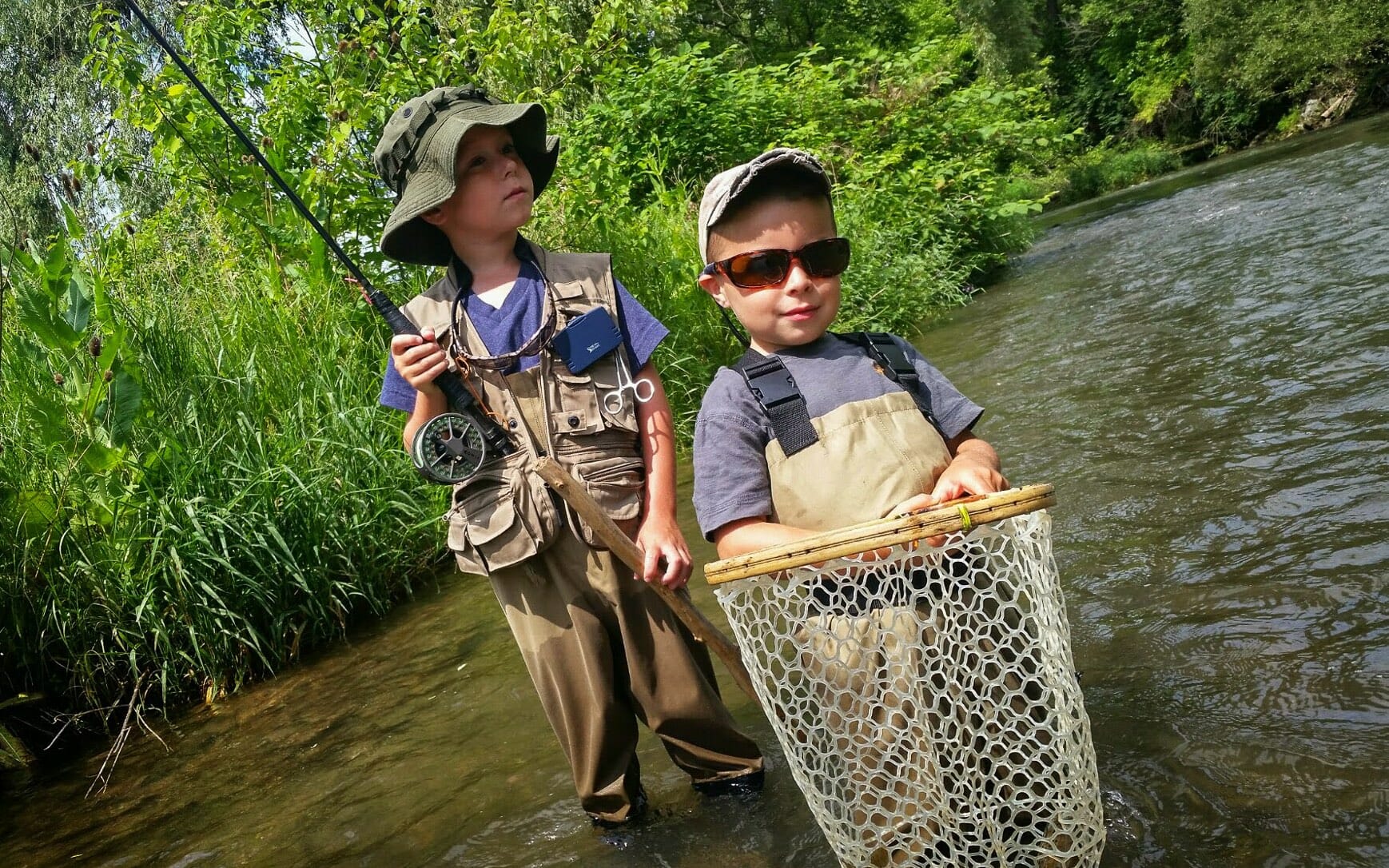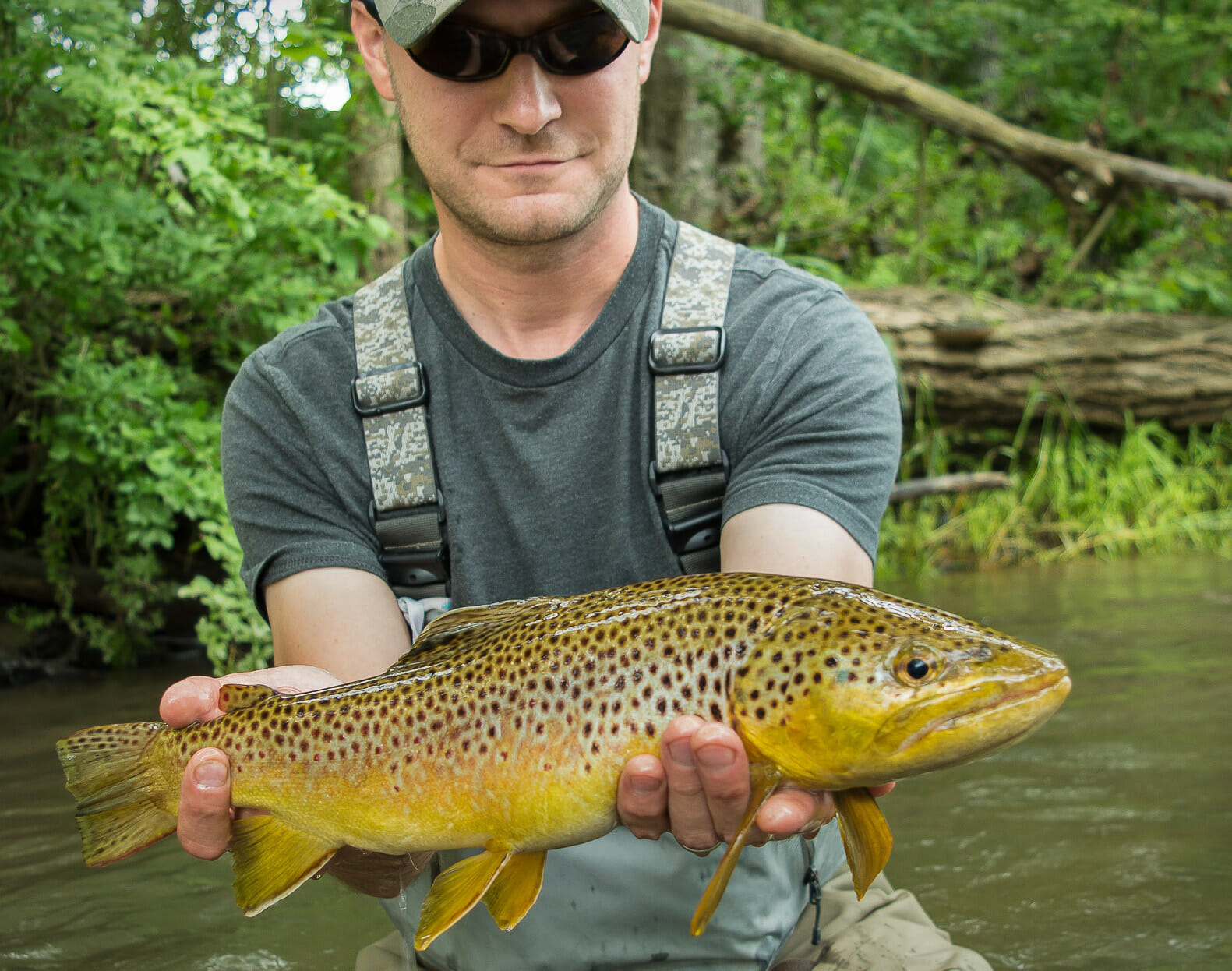Domenick Swentosky has it pretty good.
An avid trout angler, he lives just outside State College, Pa., in the heart of some pretty killer trout country. Spring Creek, one of the region’s better known streams, is just a few minutes away.
He gets on the water quite a bit, though not as much as he did pre-kids.
Lucky for us, he shares his insights, experiences and tips with us through his excellent blog, Troutbitten.
Swentosky is a full-time musician, but he still manages to be a prolific blogger. And a good one. Troutbitten is well-written, entertaining and educational. Read it and you will enjoy it — and you’ll become a better fly angler.
Rob Shane, TU’s new sportsman organizer in the mid-Atlantic region, recently caught up with Swentosky for a quick Q&A about Troutbitten.
Q: How did you come up with the idea for Troutbitten and how long have you been at it?
I started the Troutbitten blog with some friends in 2014, as a way to share our fishing discoveries and memories. About a year later, the other guys were done writing, but I kept the blog going. I became the sole writer, and I shaped the project toward my own vision.
Troutbitten is an outlet for the fishing stories that I’ve lived, and I love writing them. I think the Troutbitten stories serve as an inspiration for all of us to get out there and fish more, to enjoy a life on the water. But Troutbitten is also a place for strong tactical information. The tips/tactics articles are a chance to share the things I’ve learned by fishing hard and digging deep. I think Troutbitten tips are geared toward the experienced angler who’s looking to take things to the next level.
I love sharing all of this. So I give presentations at clubs, and I’ll start guiding in the near future. All of that dovetails nicely with the blog.
Q: Where do you see websites like Troutbitten fitting into the greater fly fishing and conservation communities?
Oh, I think online presence is everything now. I see it first hand. Through Troutbitten, I’m able to reach a large audience of people who may never give much thought to conservation. Maybe they come to the blog for some stories, then they read a conservation article and realize they can do something immediate and tangible to help enhance the wild trout rivers they love so much.
Q: Centre County, Pa., is home to some big names in fly fishing history. Do you have any conservation and fishing heroes?
Yes. I’m definitely steeped in the George Harvey and Joe Humphries tradition. When I was learning, there was no internet to speak of. To this day, I still read Joe Humphrey’s Trout Tactics a couple times a year and learn new things with every pass. It’s that thorough. That’s what I love about a good book; you can revisit it and finally understand a tactic that you were never ready to process before.
On the conservation end, I’m constantly amazed at what Bill Anderson has accomplished for the Little Juniata River in Central Pennsylvania.
Q: Do you have any advice for our TU chapter’s looking to enhance their own presence online with websites and through social media?
Well, consistency is the key, for sure. You have to post interesting articles on a regular basis, and that only comes from someone who both loves and knows what they’re writing about. From the beginning, I’ve treated Troutbitten as a portfolio for a future writing career. But no matter what the goals are, if you put something out there for the public to see, it has to be your best effort. Readers see through content that was made just to meet a deadline.

Q: What’s number one on your fly-fishing bucket list? Why?
A: I’m the kind of person (and angler) who can be happy with what I have. I don’t need a trip to New Zealand for something new to be excited about, because I live in an amazing part of the world for wild trout fishing. I’ve traveled to and fished other areas of the U.S., and although I have locations and future trips in mind, my most-hoped-for bucket-list item is to get back to fishing five to six days a week in my own region. Before my two sons were born, I spent years fishing almost every day, for long hours, and I explored this region with a DeLorme Atlas and Gazatteer and the Wild Trout Streams list from the Pennsylvania Fish and Boat Commission.
I’d like to get back to all that someday. I’d like to revisit many of the waters within a few hours drive of my own home, the streams and rivers that molded my fishing life. I want to step back into the narrow-valley brook trout streams of Northern Pennsylvania, not only to catch the trout and check in on how the streams are handling the real pressures of climate change and fracking, but to be reminded of a place in time, decades ago, where the act of exploring changed and shaped my life.



